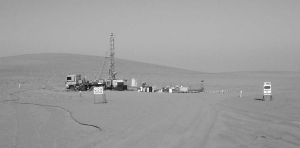Vancouver — In the midst of a flurry of questions about slowing Chinese metal consumption, Cardero Resource (CDU-T, CDY-x) saw its share price jump almost 30% on news that a Chinese group wants to buy the company’s Pampa de Pongo iron deposit in Peru for US$200 million.
Nanjinzhao Group, a private enterprise based in Zibo city in Shandong province, is offering US$200 million for the property, which is home to 750 million tonnes of iron ore.
Cardero’s president Hendrik van Alphen said in a statement that the company is happy to have negotiated the sale in a challenging marketplace.
“Pampa de Pongo is a world-class iron ore project and we are very pleased to have been able to pass the project on to a major Chinese integrated iron and steel conglomerate that has not only the mining expertise required but also the financial resources to move the project rapidly forward,” Alphen said.
The agreement requires an initial US$10-million deposit within three months; the balance is due within nine months. The deal allows Cardero to back out of the sale at any time prior to receipt of the final US$190-million payment. If the company were to back out of the deal, it would have to return the initial US$10 million and pay another US$20 million as a break fee.
Cardero says several companies have looked at Pampa de Pongo and Cardero is optimistic about other offers.
A recent preliminary economic assessment of the iron oxide copper- gold project yielded an aftertax net present value of US$3.3 billion, with an 8% discount rate, and an 18% internal rate of return.
While those numbers are impressive on their own, two significant growth opportunities sit close at hand. First, the scoping study only considered the project’s Central zone of mineralization, which hosts 750 million tonnes grading 41.7% iron, 0.093% copper and 0.059 gram gold per tonne. A resource estimate for the South zone is expected shortly; the company expects that zone to be smaller — likely around 100 million tonnes — but slightly higher-grade. If the report for the South zone concludes that it can be mined by open pit, the new zone could add years to the mine life.
In addition, a new 3-D magnetics model indicates the potential for another 400 million tonnes of magnetite mineralization in the East zone. Rio Tinto (RTP-N, RIO-l) drilled a single hole into the East zone in 1996, hitting the edge of the anomaly but still returning 191 metres ofmineralization. The East zone is sufficiently distant from the Central zone that, should it carry the predicted mineralization, it could be mined simultaneously.
Soon after the scoping study was released, Cardero received the results of direct reduction (DR) testing of the test pellet produced from Pampa de Pongo ore. The pellets exceed industry standards for DR pellets, making them a premium product that should attract a higher-value contract than would blast-furnace grade pellets. Only a small percentage of pellets produced globally meet the requirement for DR.
Specifically, DR pellets usually garner a 10% premium, which helps the project’s already healthy economics. The scoping study is currently being reworked to incorporate the premium price; results should be available by the end of October.
The project sits 400 km south of Lima. More importantly, Pampa de Pongo is only 38 km from the San Juan deep-water port on the Pacific coast, which is a considerable advantage because it is directly across the ocean from resource-hungry Asia. Much of the world’s iron comes from Brazil; to get to Asia, Brazilian iron ore has to travel through the Panama Canal.
The Central zone scoping study predicted a 24-year mine life with the project producing 15 million tonnes of iron ore pellets annually. Using a base-case iron ore price of US$128 per tonne, the study estimated life-of-mine project revenue, net of off-site costs and project royalties and including copper and gold credits, of US$42 billion or US$1.75 billion per year.
Preproduction capital is forecast at US$3.3 billion. Expansion and sustaining capital is estimated at US$4.2 billion. All capital costs include 20% contingency.
Cardero optioned Pampa de Pongo from Rio Tinto in 2003, for a total of $500,000.
News of the deal boosted Cardero’s share price 41 or 28% to close at $1.86. The company has a 52-week trading range of 97-$3.59 and has 57.7 million shares issued.


Be the first to comment on "Cardero offered US$200M for Pampa de Pongo"